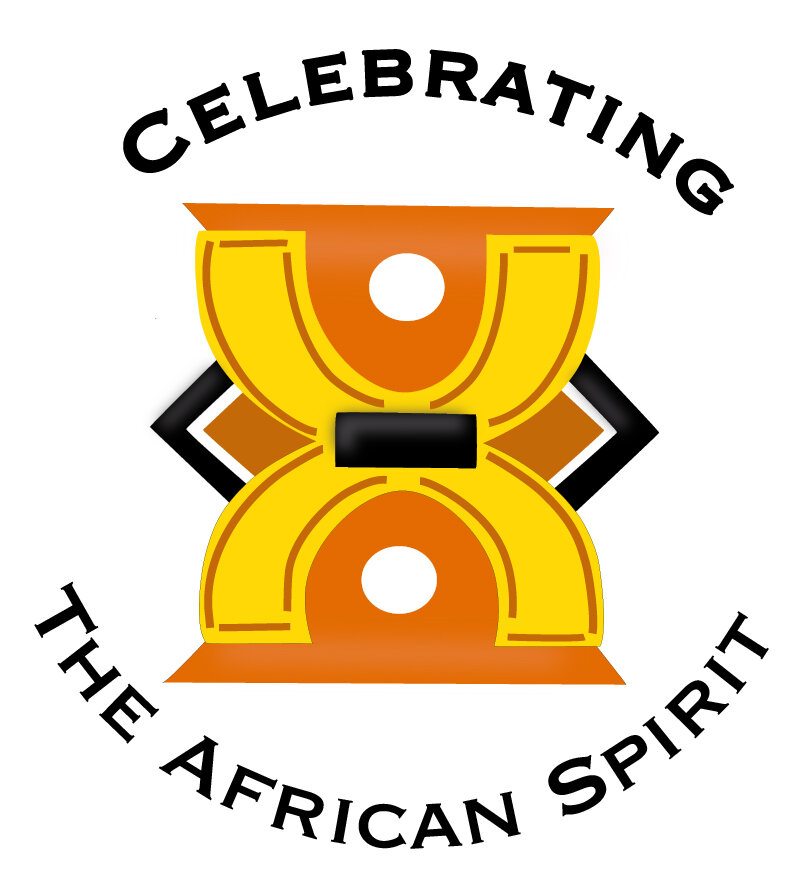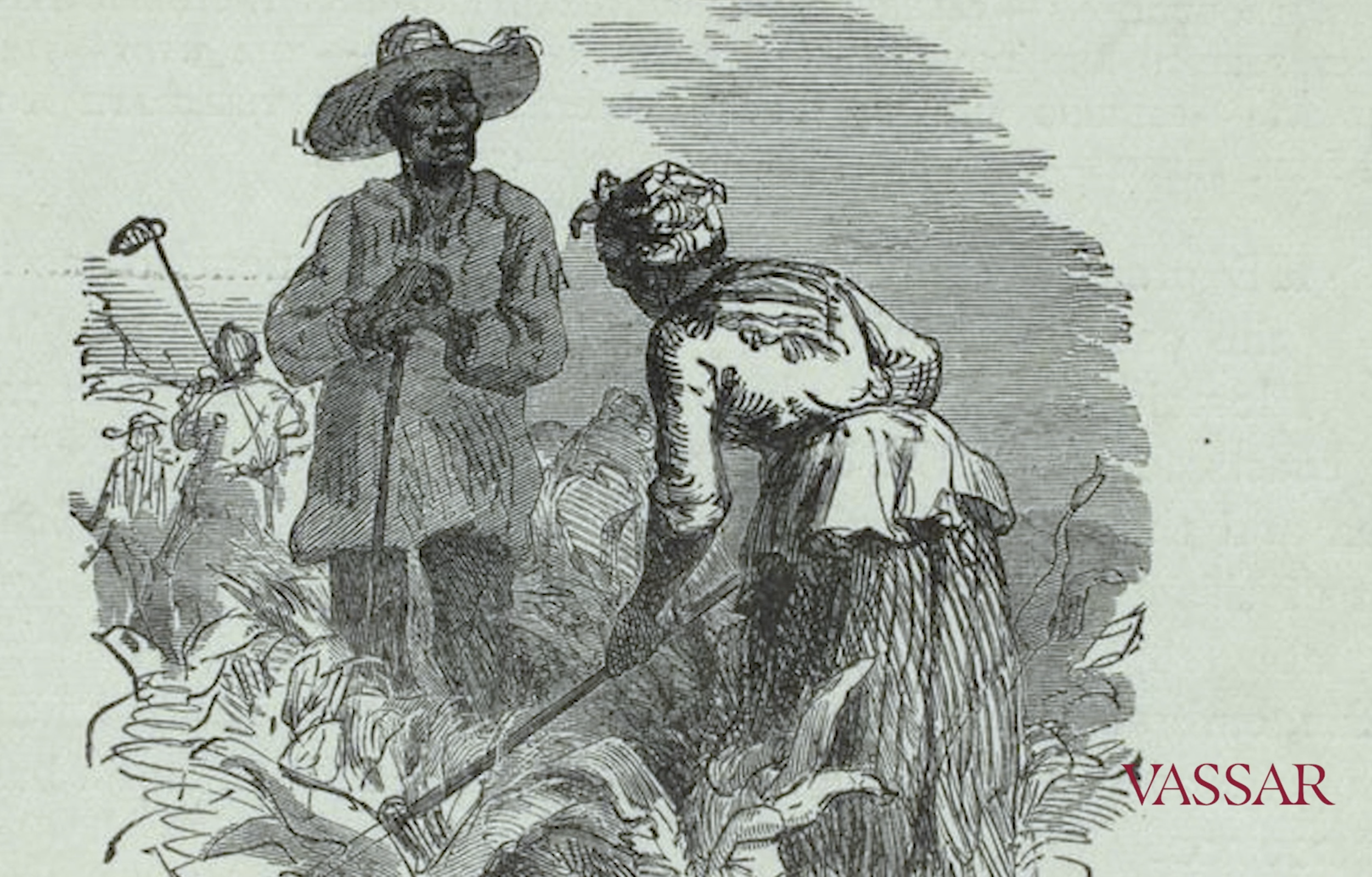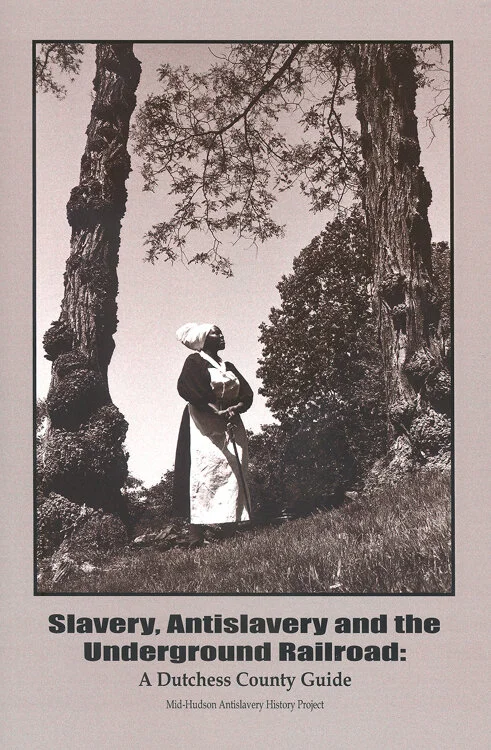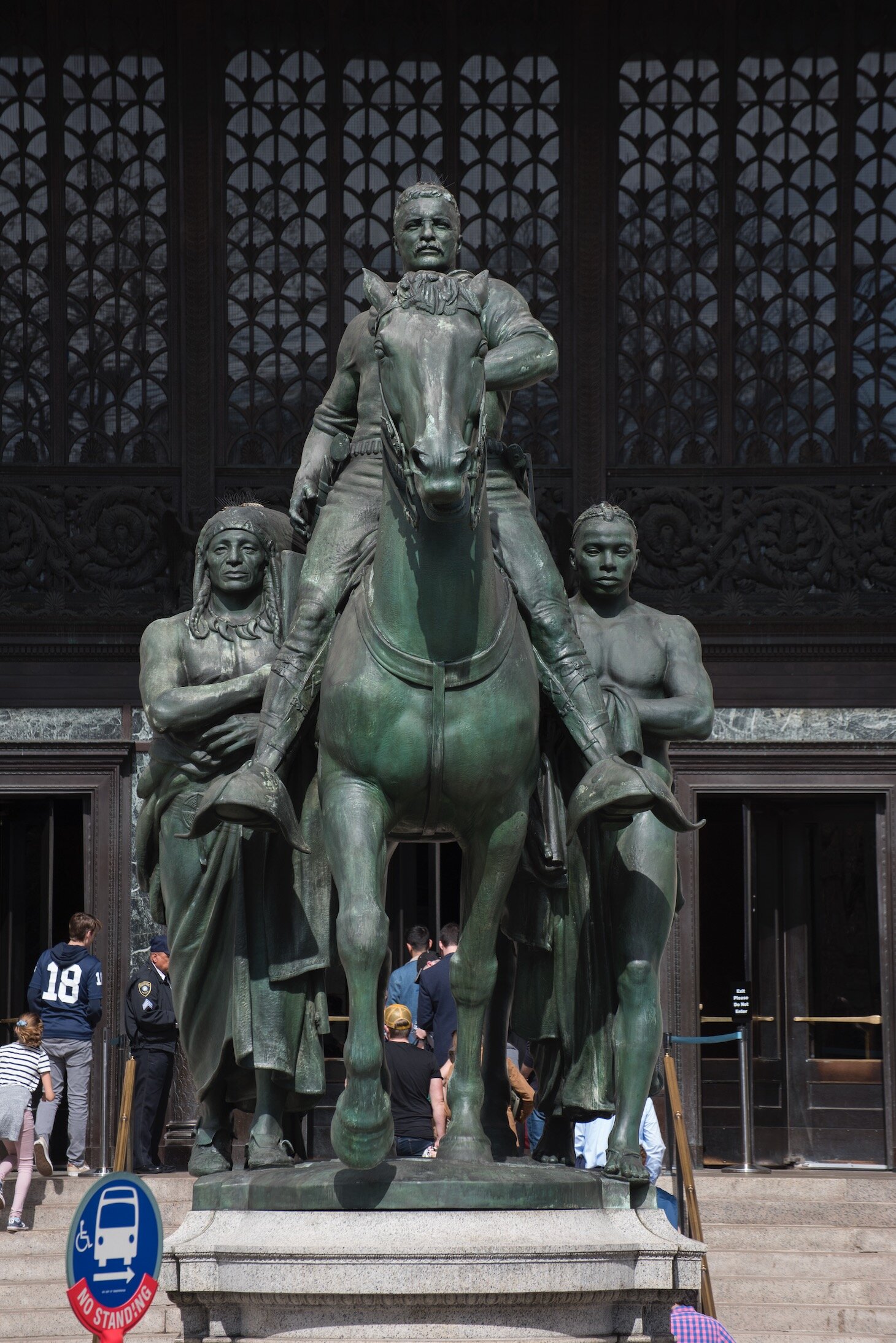Resources
Articles, books, and other educational material on the histories and memorials of enslaved Africans and their descendants in New York state, primarily the Mid-Hudson Valley.
Based in New York State
Poughkeepsie’s Equality Trail
A walking trail developed by the Dutchess County Historical Society that “illuminates the path that led to a US constitutional promise of equality after the Civil War, and the ongoing effort to realize that promise.” A series of historical markers that show the fight for equality after the Civil War.
Mapping Inequality in Poughkeepsie, NY
This interactive map shows the effect that redlining had on Poughkeepsie in 1940. Communities have been racialized through property values and Vassar College’s presence.
Small, Zachary. “A Monument Honoring Brooklyn Abolitionists Stalls Under Scrutiny.” The New York Times, 25. Jan, 2021.
Artist Kameelah Janan Rasheed’s design for a monument honoring Brooklyn Abolitionists in Willoughby Square Park was meant to engage viewers with more than just placards and names: she wanted to bring the people to life. However, critics were displeased with how abstract her design was.
Newburgh Memorial Reveals Uphill Battle to Preserve Black Cementaries (2024)
The process of reinterring Black remains in Newburgh, New York, spanning over a decade, unveils significant aspects of New York's history. This lengthy endeavor likely reflects a complex historical legacy surrounding the treatment and recognition of Black individuals in the region, indicating systemic inequalities, historical injustices, and the challenges faced in rectifying past wrongs. Additionally, the prolonged effort highlighta the community's commitment to honoring and preserving the memory of these individuals, emphasizing the importance of acknowledging and confronting difficult aspects of local history.
Brewster Student discovers Black Union Solider was From NY (2022)
A discovery made by a student from New York regarding the history of a Black Union soldier who was believed to be from New Jersey. It suggests that the historical records might have been incorrect about the soldier's origin, and the student's research led to uncovering the truth. This discovery sheds light on the importance of revisiting historical narratives and the role of individuals in challenging established accounts.
“YMCA Farm Project Honors Sojourner Truth.” The Kingston Daily Freeman, 16 November, 2020.
The YMCA of Kingston and Ulster County authored an official declaration to make November 26th “Sojourner Truth Day” to recognize and honor the accomplishments and achievements of this incredible feminist and abololitionist. The Ulster County Legislature and Kingston mayor have signed the legislation.
Staples, Brent. “The Death of Black Utopia.” The New York Times, 28 November, 2019.
Brent discusses in their op-ed the forgotten Seneca Village, a flourishing Black town that was located in what is now Central Park. Most history about the village was forgotten until 1992, and since then, a new desire to re-remember this history has been created. Mayor de Blasio has provided money for a monument in Central Park that celebrates the Lyons family, an influential Black family who owned land in Seneca Village and constructed a stop on the Underground Railroad. The forgotten history of Seneca Village highlights forgotten history of slavery in New York, and it begs the need for a re-examining of the history of New York.
Mayor's Advisory Commission on City Art, Monuments, and Markers. Report to the City of New York, January 2018.
This report details a dossier given to the Mayor of New York City in regards to how the City should address, create, and re-do monuments and markers on City property. The report details public input, recommendations, as well as a variety of different findings, attempting to create a more inclusive and justice-oriented city.
Hidden History: Slavery in the Hudson Valley by Larry Hertz (2021)
Presented by Vassar College in collaboration with Celebrating the African Spirit, Vassar's Hidden History series examines the untaught and occluded history of racial oppression in the United States and the roots of injustice. CAS and Hidden History have similar aims. Both acknowledge that we must examine the past as a way to achieve a more equitable future. Here, Vassar spotlights CAS and its efforts to expose a truth that continues to shock many: That slavery existed and flourished in the Hudson Valley until the early 19th Century.
Kingston Daily Freeman, “New Paltz, NY Village OKs black history museum plan”
The Ann Oliver House on Broadhead Avenue in the village of New Paltz can be seen on Tuesday, Jan. 11, 2022
Slave-holding New York State Congressional Representatives: A Complete List
According to a Washington Post report in the early years of the American republic over 1,700 Congressional representatives, Senators and Congressmen owned enslaved people. Despite a very clear conflict of interest they voted on the laws governing the country and the enslaved population. Some Representatives served in Congress long after slavery was finally abolished in New York State.
Hertz, Larry. “Hidden history: Slavery in the Hudson Valley?” Vassar Stories, 10 February, 2021.
Vassar launched an Inclusive History Initiative launched in 2023 to reflect on Vassar’s history and impact in Poughkeepsie. Much of the initiative has unearthed the harsh reality of slavery that supported the growth of the Hudson Valley. The committee for the Vassar Inclusive History Initiative used an interview with CAS board members from 2021 as a part to help with their investigation.
Eastman, Carolyn. “Remarkable Documents Lay Bare New York’s History of Slavery.” Smithsonian Magazine, September/October 2024
These manumission archives from the Smithsonian show efforts to end slavery in New York in the late 18th century. It details the gradual steps taken to bring about the abolition of slavery in New York State.
Kemble, William. “Quitman Marker to be Replaced.” The Kingston Daily Freeman, 15 July, 2020.
The Rhineback town board has voted to replace the Quitman Marker on Route 9 that honored slavery advocate John A. Quitman. A new marker honoring Quitman’s father, Reverend Frederick Quitman, will replace the marker.
Singer, Allan. “Viewpoint: Rethink The Planned Central Park Suffrage Statue.” The New York History Blog, 27 May, 2019.
New York City is planning to install a statue of Elizabeth Cady Stanton and Susan B. Anthony to commemorate the 100th anniversary of the 19th Amendment. This piece calls to attention the story of Frances Ellen Watkins Harper, a civil rights activist, poet and suffragette whose story is often forgotten. Many white suffrage activists disagreed with her viewpoints and were thus often left out of the narrative. This article calls for a reckoning with the past wrongs by honoring Harper’s memory by placing a statue of her instead.
Dutchess County Historical Society’s Black History Sources
The Dutchess County Historical Society offers reading material on Black histories from the 18th and 19th centuries, racial justice projects such as the Poughkeepsie Equality Trail, a walking tour of the stories and histories of enslaved people in Poughkeepsie, and more.
Mid-Hudson Antislavery History Project, Slavery, Anti-Slavery and the Underground Railroad: A Dutchess County Guide (Poughkeepsie, 2010).
“Slavery, Antislavery, and the Underground Railroad: A Dutchess County Guide, introduces residents and visitors to the story of slavery and freedom in Dutchess County, New York. It includes a narrative overview of local events and takes readers on a guided tour of fifteen important sites associated with slavery, antislavery, and the Underground Railroad.”
MID-HUDSON ANTISLAVERY HISTORY PROJECT JUNE 2007 RESEARCH REPORT by Rebecca Edwards, Torrie Williams, and Kristina Poznan
In 2007, through Vassar College’s Ford Scholar program, MHAHP conducted intensive research on the Underground Railroad in the Hudson Valley, with particular focus on the African American community in Poughkeepsie before the Civil War.
Legislation announced to declare Sojourner Truth Day in New York
ALBANY – Senator Michelle Hinchey and Assemblyman Kevin Cahill have introduced legislation to designate November 26 each year as Sojourner Truth Day in New York State.
The bill was inspired by the students of the YMCA Youth Crew of Kingston who led a local movement to honor the life and legacy of the abolitionist and suffragette.
New Database Highlights African American Burial Grounds in NY State
African American burial grounds in NY state reflect the history of segregation and slavery. Many burial grounds offered low-quality services that washed away the memory of African Americans in NY.
A 19th-century house built by a Black carpenter is envisioned as the future home of a Black History Research and Cultural Center
Tyler, Rashida. “Removing History from Its Pedestal: On Taking Down Statues in Academy Green.” Medium, 29 June, 2020.
Tyler argues that the Academy Green should be used as a tool for education and teaching the public about the real history of Ulster County. Tyler advocates for taking down the statues from their original location and instead moving them into a different location for educational purposes. Tyler discusses her own discoveries of her family history and how complex and intertwined the histories of everyone in the Hudson Valley can be. She lastly advocates for the importance of addressing all voices in history in order to better educate future generations.
Mirzoeff, Nick. “Why It’s Right That the Theodore Roosevelt Statue Comes Down.” Hyperallergic, 30 June, 2020.
After years of advocating for the removal of the statue of Theodore Roosevelt from the American Museum of Natural History, it will finally come down. This 14-feet tall statue literally showed Roosevelt riding over African and Indigenous peoples, so upon entry into the museum, it created a perception of hierarchy. While taking down the statue is a great first step, it does not address the problem that many museums, including the American Museum of Natural History, values whiteness over everything else. Taking down the statue serves as a point for white people to begin to reshape what we value, and for institutions like museums to rethink what they want to honor.
Susan Stessin-Cohn and Ashley Hurlburt Biagini, In Defiance: Runaways from Slavery in New York’s Hudson River Valley, 1735-1831 (Delmar, NY: Black Dome Press 2016).
“This is a valuable collection of fugitive slave advertisements that tells much about the lives of self-emancipated blacks in the rural North. Each notice receives pristine, scrupulous editing. Focusing on the Hudson River Valley, the editors uncover a persistent, local slavery, with national implications. Readers will be astonished at the plentiful notices that appeared after the New York State Gradual Emancipation Act of 1799, indicating continued conflict between avaricious masters and those who fled to gain their freedom.”
-Graham Russell Gao Hodges
The Brooklyn Rail: A Past That Is Not Past by Frances Cathryn
Protestors rallied in front of the statues at Academy Green in Kingston in response to the murder of George Floyd and to demand an end to police surveillance and brutality in the city. The author explains efforts to dismantle the white supremacist monuments and culture in Kingston.
Times Union, “Black judge Jane Bolin paved path to Ketanji Brown Jackson nomination”
Hudson Valley’s lesser-known boundary breaker, Jane Bolin, set not one but at least four firsts during her nearly 99-year lifetime, including being the first Black woman to serve as a judge in the United States when she was appointed in 1939. She paved the way for Ketanji Brown Jackson’s nomination for Supreme Court during Biden’s administration.
Port Jervis community commemorates life of Black man lynched by mob 130 years ago
New report shines spotlight on enduring stain of slavery in NY
A new report details how the transatlantic slave trade fundamentally shaped life and wealth in New York, New Jersey, and other northern areas, and to an extent historians say isn’t commonly known.












